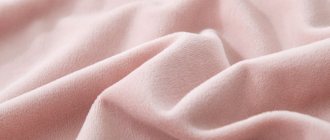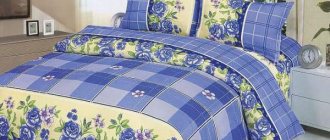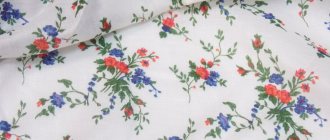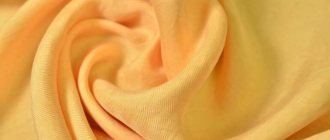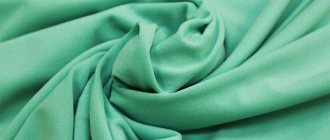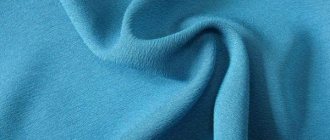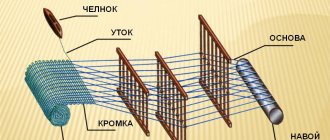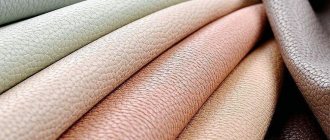Advantages
This upholstery fabric is pleasant to the touch. Although it appeared on the market not so long ago, it has already earned positive reviews. The advantages of the material are obvious:
- Strength and wear resistance. Even after years of use, the fabric does not lose its properties.
- Eco-safety. The composition contains natural ingredients, so the material is harmless to health.
- Progressiveness. Microvelor began to be sold not so long ago, so during production all the wishes of users were taken into account.
- Dust repellent. The basis is microfiber, so the material does not attract dirt and dust.
- Resistant to fading. The material does not deteriorate from direct sunlight.
- Antistatic and hypoallergenic. The fabric does not have a strong odor, which can lead to allergies.
- Moisture resistant. Microvelor does not deteriorate from water, so the coating can be washed.
- Richness of flowers. There are many colors, so you can choose the right option for any design.
- Affordable price.
- Attractive view. The furniture looks rich.
These are all the characteristics of microvelor furniture fabric. Any objects look beautiful with it. According to reviews, microvelor furniture fabric is suitable for many interiors. This choice can highlight the excellent taste of the owners of the room.
Varieties
The fabric is rich in varieties:
- Velvet cord. Distinctive features include a high hem. Its height is from 1.5 mm, while the scar is very wide. To produce this type of material, the densest threads are taken, and the fabric turns out to be very warm.
- Corduroy rib. This is a type that is distinguished by small scars and short pile. The fabric is pleasant to the touch and very light. The rib is divided into classic (with average height and width of the rib, the number is within 10) and microvelvet (fabric that has about 14 rib). There are also models with a wide or complex hem.
- Shaped. It differs in that threads are used to create ruthes on fabric, which makes this type especially popular.
- Velveton is a smooth corduroy with unkempt pile. Dense, reminiscent of suede, slightly velvety.
Corduroy
There are also synthetic varieties of corduroy fabric: stretch corduroy, which received its name because it stretches well; luxury corduroy, used for upholstery; material labeled “frost” is known for its frost effect on fabric.
Currently, production has expanded significantly. People have learned to produce corduroy fabric with different patterns and the location and size of the scars. You can create fine corduroy and vice versa. The density of fabric also changes industrially.
Uncombed corduroy
Very often corduroy is confused with velvet material, but these are different fabrics. The methods of textile production for them are also different. The colors for this type of material are usually monochromatic. For example, when sewing, gray corduroy is often chosen.
For your information! Depending on the use, the material is divided into furniture, curtains and intended for suits and clothing.
Compound
Although microsuede is similar in appearance and name to velor, the materials differ in composition and origin. It has a woven base made of cotton, nylon, polyester and a mixture of natural and synthetic fibers.
The velvety texture is created by applying a pile of finely chopped nylon or nylon to a base treated with glue. To ensure uniform distribution of fibers, this work is carried out in an electrostatic field. To improve its performance properties, the material is treated with a Teflon compound.
Care
How to care for this furniture fabric? Microvelor can last for many years, but the material cannot be washed as it will deteriorate. Teflon-coated fabric requires standard vacuuming.
Food stains, toothpaste and other stains are removed with a wet cloth. Soap solution or soda can be used. You should clean it carefully, do not pour a lot of water, otherwise the microsuede will lose its appearance.
Care instructions
This type of fabric requires delicate care. If you don’t take care of it, the product will eventually only have to be thrown away.
Handwash
Washing and drying
It is highly undesirable to wash items made from this material in a washing machine.
Basic Rules:
- If machine wash is necessary, use manual or delicate mode. Maximum temperature - 30-40°C;
- For products, hand washing is preferable;
- The spin should not be too strong. The product is squeezed out a little, then dried on a hanger or dryer. It is better not to use a spin cycle in the washing machine;
- drying on radiators and heaters is prohibited;
- Ironing the product from the front side is strictly prohibited. Ironing is done through a layer of cotton fabric at low temperatures. The material must be dry.
Fabric care:
- dust from products is cleaned with a brush, but rubbing too vigorously is prohibited;
- If there is serious contamination, it is advisable to take the item to dry cleaning. Dry tape can be used for the same purpose;
- washing can be replaced by wiping with a sponge. A wet sponge is soaped, then the product is wiped with it. After this, you need to immediately wipe the fabric with a dry sponge;
- To give the product shine, you can soak it in a solution of ammonia, after first cleaning the fabric from dust. The solution is diluted in a ratio of 5 liters of water per 1 tbsp. l. ammonia. The procedure lasts 15 minutes, after which the product is washed in soapy water and rinsed well;
- steaming is carried out in a vertical position;
- the material should not dry for too long.
You might be interested in the history of Chantilly lace: features
Cleaning Features
The procedure for cleaning furniture is as follows:
- You should look at the tag. They usually indicate how to properly clean. Typically, microvelour contains 1 of 3 measurements: “W” - means that a product with a water base is suitable, “S” - a composition of non-aqueous solvents, “SW” - a product with both water and other bases is suitable.
- A suitable cleaning agent must be selected. Its main component will be isopropyl or other pure alcohol, for example, vodka. If the furniture is marked "W" or "SW", a weak solution of water and soap or detergent is suitable. After this procedure, stains may remain on the material, so it is preferable to use alcohol. In addition to the detergent, you will need a clean and empty spray bottle, a white or undyed sponge, a towel, a brush with soft bristles, and a vacuum cleaner.
- You can vacuum furniture. You need to remove the pillows and vacuum the sofa with a soft brush attachment to remove crumbs, dust, and debris. Large debris must be removed by hand. Vacuum every nook and cranny, not forgetting your pillows.
- The spray bottle must be filled with cleaning agent. Alcohol is used for furniture. You can mix liquid soap in water (15 ml per 1 liter).
- The product needs to be tested. To do this, find an inconspicuous area and check the effect of the detergent on it. Apply a little alcohol or cleaning solution to the area, blot it with a clean cloth and leave to dry. After an hour, you need to check for discoloration, changes in texture, dye seepage, or shrinkage of the fabric.
- The furniture needs to be cleaned. Apply a small amount of cleaner to a small area of the sofa or chair. Stains and dirty places are wiped with clean material or a sponge. To avoid smearing dirt, you need to turn the material with the clean side more often. The pillows also need to be treated.
- The furniture must dry. If alcohol or a little water is used, the microsuede dries quickly.
- The material needs to be smoothed out. It is treated with a brush with soft bristles.
- It is important to keep micro velor clean. Vacuum it at least once a week. Spilled liquids should be wiped up immediately to prevent stains from forming. Old stains can be removed with a small amount of alcohol and a clean cloth.
Judging by the reviews, furniture fabric will look neat only if quality care is provided. These rules apply to the processing of sofas, armchairs, poufs and other furniture made of such material.
Kinds
Microvelor sofas are:
- Straight. This is a standard look that is more suitable for a classic neutral interior.
- Corner. Suitable for a modern atmosphere. The furniture saves space and can be either folding or regular. Corner sofas when disassembled can be used as a sleeping place.
- Island. This is a great option for spacious rooms, since they can be installed in the center of the room.
Models with a carriage coupler are currently in demand. The name comes from the reign of the kings, and therefore looks rich. The furniture is held together with buttons, creating a diamond-shaped pattern.
Advantages and disadvantages
Corduroy has many positive qualities. First of all, the advantages include:
- Attractive, “rich” appearance;
- Warmth and windproofness;
- Strength;
- Wrinkle resistant.
However, there are several disadvantages:
- Tendency to shrink;
- Inelasticity;
- Moodiness.
If not properly cared for, corduroy quickly loses its beauty. It requires much more careful handling than most cotton fabrics.
Colors
It is important to carefully choose microvelor furniture. The color of the product is of great importance. Designers advise choosing the shade of the sofa that looks harmonious with other items. You need to take into account your lifestyle and character. After all, some people like bright colors, while others like calm ones.
Each style has a combination of certain colors, which must be taken into account when choosing furniture. They all have their own characteristics:
- Red. For some people it causes aggression, while for others it can become a symbol of romance and comfort. Such furniture is suitable for art deco, hi-tech, constructivism, techno styles.
- Blue. Psychologists believe that this color has a beneficial effect on the psyche and encourages relaxation and tranquility. Blue is often present in classic styles.
- Green. A micro velor sofa can be the center of a room. It harmonizes perfectly with yellow, blue, and pink objects. The shade causes drowsiness. It perfectly complements the Baroque style.
- Brown. This sofa creates comfort and coziness. It is chosen for country, empire, renaissance, classic and rococo styles. Brown color harmonizes perfectly with beige, yellow, and blue.
- Black. This sofa should be chosen for a bright and spacious room. It goes well with gray, red, yellow. It is chosen for minimalism.
- Grey. Furniture in this color makes the room clear and concise. It goes with yellow, red, purple. Choose for gothic style and minimalism.
- White. This sofa brightens up the room. It is chosen for Art Nouveau style. Goes great with gold, beige, gray.
These are the most sought after colors used to create fabrics. Each color has shades. Sofas and armchairs made from such materials are beautiful and comfortable.
When choosing furniture, you need to take into account your taste and fashion trends. Products made from microvelor, which are included in the luxury class, look original. They are complemented by stylish decor - a carriage screed, which makes the product more luxurious.
Which rooms is the sofa suitable for?
The microvelor sofa is perfect for the hallway, living room, and bedroom. It is advisable not to choose such furniture for the dining room and kitchen, since it will need to be washed frequently due to food contamination. Textiles also absorb food odors.
In principle, armchairs and sofas are suitable for a hallway made of microvelor, but it is better to purchase leather furniture for this room, as it is easier to clean and retains its new look for a long time. It is advisable to purchase microvelor products for the living room. The furniture there will decorate the room and complement the interior. In the bedroom, the sofa will last a long time, since only the owners sit on it.
Comparison with other materials
The difference is the production technology. It is not the same as velvet, but similar to flock making. The fabric is made using honeycomb weaving, making it practical and abrasion-resistant. It is advisable to choose a material with fine pile and dense upholstery, then it will last a long time and look good.
Although there are now many other upholstery options, microsuede remains one of the favorite materials. If you take proper care of it, its beautiful appearance will last for many years.
According to reviews, microvelor furniture fabric washes well. The material is not afraid of stains. It has a coating that does not absorb dirt or attract dust. You need to take care of it at least once a week, and then it will look like new. What is better - velor or micro-velor? The second type of fabric is considered more practical and durable. According to reviews, it is wear-resistant and durable.
Corduroy: composition and properties
At one time, only cotton corduroy was made. But in modern production it is rarely found. Nowadays, a mixture of cotton with synthetic additives is most often used. They are used as:
- viscose;
- elastane;
- polyester;
- polyamide.
Note! There is another, no less popular option, when corduroy (fabric) is completely synthetic. It is unpretentious and more persistent, but, as is clear from the composition, it is not natural.
Pile close up
The main properties are softness, strength and abrasion resistance. This material is durable, especially synthetic types. The material does not stretch, but has a pleasant pile, similar to thick eyelashes. The fabric also has low wrinkleability, is quite dense and warm.
For your information! Corduroy is a fabric ideal for windy, cool weather.
Production technology
A special machine is used for production. It weaves layers of threads in different ways. In this case, one thread is always lint-forming and differs from the rest. The last step is cutting across the coatings. A pile appears at the cut site, and the machine produces a couple of finished rolls of material.
You may be interested in this Interesting facts about printed fabrics
Rolls of material
Difference from velor
What is the difference between velor and micro-velor? Velor is a knitted pile fabric made from 5 threads by cutting. The composition of velor includes viscose (30%), cotton (20%), synthetics (50%). Since mixed threads are used, velor has moire tints and increased mechanical stability.
The material is in demand because of its texture: due to the different lengths of the pile, a pattern is obtained that acquires depth. The material looks especially beautiful when decorating complex surfaces, for example, using a carriage screed (capitonne).
Velours:
- does not wrinkle;
- has high wear resistance;
- does not rub off for a long time;
- almost does not fade in direct sunlight.
But the material is sensitive to mechanical damage. It usually gets damaged by the claws of pets. According to reviews, microvelor furniture fabric is of better quality, and products made with it look more original. The room will look more luxurious this way.
Comparison of the characteristics of microsuede with other fabrics
Microvelor has high wear resistance, is more practical and does not fade during use. For example, reviews of microvelvet furniture fabric are not always very good, since this fabric requires special care; it does not tolerate friction and moisture, unlike microvelour, which is abrasion-resistant. Microcorduroy furniture fabric usually lasts no more than 5 years, since constant mechanical stress quickly deteriorates the fabric.
Furniture microvelor is a more durable material than many fabrics and therefore it will last an order of magnitude longer. You can choose microvelor in the catalog of furniture fabrics.
